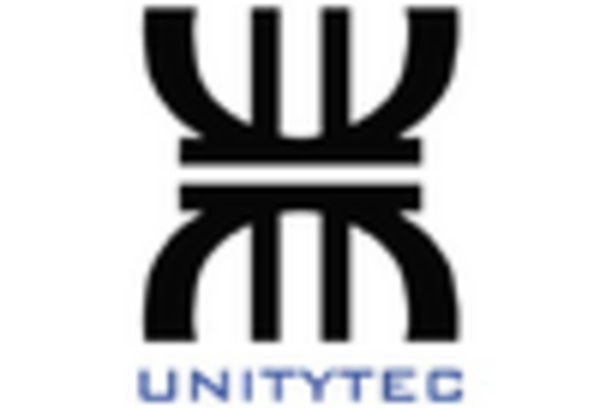Growth of the Gaming Industry
The gaming industry in South America is experiencing rapid growth, which is positively impacting the spatial computing market. With an increasing number of gamers and the rising popularity of immersive gaming experiences, there is a heightened demand for AR and VR technologies. Recent statistics suggest that the gaming market in South America is projected to reach $3 billion by 2026, with a significant portion attributed to spatial computing applications. This growth is likely to encourage game developers to invest in innovative spatial computing solutions, thereby driving the overall market forward. As the gaming community continues to expand, the spatial computing market is expected to benefit from the influx of new users and increased engagement.
Rising Demand for Enhanced User Experiences
the spatial computing market in South America is seeing increased demand for enhanced user experiences across various sectors.. Industries such as retail, education, and healthcare are increasingly adopting spatial computing technologies to create immersive environments that engage users more effectively. For instance, the retail sector is leveraging augmented reality (AR) to provide virtual try-ons, which has been shown to increase customer engagement by up to 30%. This trend is likely to drive investments in spatial computing solutions, as businesses seek to differentiate themselves in a competitive landscape. Furthermore, the growing consumer expectation for interactive and personalized experiences is pushing companies to explore innovative applications of spatial computing, thereby expanding the market's potential in South America.
Integration of Spatial Computing in Education
The integration of spatial computing technologies in the education sector is emerging as a significant driver for the market in South America. Educational institutions are increasingly adopting AR and VR tools to enhance learning experiences, making complex subjects more accessible and engaging for students. Reports indicate that schools utilizing these technologies have seen improvements in student retention rates by as much as 25%. This trend is expected to continue, as educators recognize the potential of spatial computing to facilitate interactive learning environments. Consequently, the spatial computing market is expected to grow as educational institutions invest in these technologies. This investment will prepare students for a technology-driven future..
Government Support for Technological Innovation
Government initiatives in South America are playing a crucial role in fostering the spatial computing market. Various countries are implementing policies aimed at promoting technological innovation, which includes funding for research and development in spatial computing technologies. For example, Brazil has allocated approximately $200 million to support tech startups focusing on AR and virtual reality (VR) applications. This financial backing not only stimulates local innovation but also attracts foreign investment, further enhancing the market landscape. Additionally, government-sponsored programs aimed at integrating spatial computing into public services, such as urban planning and transportation, are likely to create new opportunities for growth within the industry.
Emergence of Startups Focusing on Spatial Technologies
The emergence of startups in South America focusing on spatial computing technologies is a noteworthy driver for the market. These startups are innovating and developing unique applications that cater to various industries, including real estate, tourism, and healthcare. For instance, a growing number of companies are creating AR applications that enhance property viewing experiences, which can lead to quicker sales and improved customer satisfaction. The startup ecosystem is thriving, with venture capital investments in tech startups reaching approximately $1 billion in 2025. This influx of capital is likely to accelerate the development of spatial computing solutions, thereby contributing to the overall growth of the market in South America.

















Leave a Comment